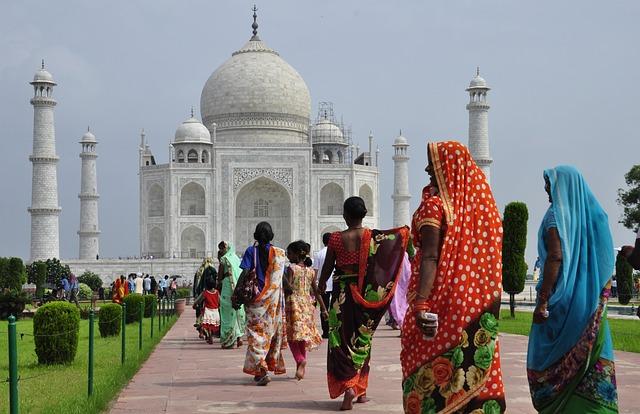In a significant yet understated diplomatic achievement, India and Japan have successfully strengthened their foothold in Bangladesh, countering China’s pervasive influence in the region. While much of the attention has been focused on the more overt power dynamics at play among these Asian nations, recent developments reveal a carefully orchestrated alliance between New Delhi and tokyo that has quietly tipped the balance in their favor. This article delves into the intricacies of this diplomatic win, examining the strategic partnerships, economic initiatives, and cultural ties that have emerged, ultimately highlighting how they contribute to a larger vision for stability and growth in South Asia. As the geopolitical landscape continues to evolve, the implications of this victory reverberate beyond the borders of Bangladesh, signaling a new phase in regional diplomacy characterized by collaboration and resilience against external pressures.
The Strategic Significance of Bangladesh in Indo-Japanese Relations

Bangladesh plays a pivotal role in the strategic calculus of both India and japan, as its location and burgeoning economy make it a critical hub in south Asia. The strengthening of ties between these nations is not merely a diplomatic nicety but a calculated move to counterbalance China’s expanding influence in the region. Through initiatives such as the Bay of Bengal Initiative for Multi-Sectoral Technical and Economic Cooperation (BIMSTEC) and significant investment projects, India and Japan are striving to enhance connectivity, which includes roads, railways, and energy infrastructure that bolster Bangladesh’s development while together promoting their own geopolitical interests.
Moreover, Bangladesh has emerged as a vital participant in the Indo-Pacific strategy, which aims to ensure a free and open maritime route in the face of increasing assertiveness from China. The collaborative efforts can be observed through various frameworks, such as:
- Economic Investments: Both India and japan have committed vast resources to infrastructure projects in Bangladesh.
- Security Cooperation: Enhancing maritime security leads to a collective approach to addressing regional threats.
- Technology Transfer: Collaborative projects in technology and innovation foster economic resilience.
As India and Japan continue to engage diplomatically with Bangladesh, the shift in power dynamics is palpable.This evolving partnership signifies a broader regional strategy focused on fostering alliances that can stand resilient against external pressures, particularly from china. The scale of chinese investment in Bangladesh has been substantial; though,the Indo-Japanese emphasis on lasting development and mutual benefit is gradually presenting a compelling alternative for Bangladesh,one that aligns its growth trajectory with democratic values and regional stability.
Assessing the diplomatic Maneuvers Leading to the Outcome

The recent developments in bangladesh highlight a strategic triumph for India and Japan amid rising concerns over China’s growing influence in the region. The diplomatic maneuvers were marked by a series of bilateral discussions and collaborative initiatives aimed at fostering economic ties and infrastructure development. Both nations approached their engagement through multifaceted diplomacy, emphasizing mutual benefits and shared democratic values, which resonated well with the Bangladeshi leadership. By focusing on key sectors such as technology transfer, trade enhancement, and investment opportunities, India and Japan effectively positioned themselves as reliable partners, contrasting sharply with china’s frequently enough contentious dealings.
The success of this diplomatic engagement can be attributed to several critical factors:
- Strategic Bilateral alliances: Strengthening ties through joint ventures and partnerships.
- Infrastructure Investment: Commitments to financing major projects that address local needs.
- People-to-People Engagement: Cultural exchanges that foster goodwill.
- Geopolitical Stability: Positioning against potential over-dependence on Chinese economic support.
An analysis of these maneuvers illustrates how India and Japan not only countered China’s expansive reach but also paved the way for lasting relationships in South Asia. The diplomatic success achieved here could serve as a blueprint for future engagements as both nations navigate the complexities of regional politics.
The Role of Economic Cooperation in Countering Chinese Influence

The recent developments in Bangladesh demonstrate a significant pivot in the region’s diplomatic landscape, driven largely by enhanced economic cooperation among nations. As India and Japan strengthen their ties and expand their investments in Bangladesh, they present a formidable counterbalance against growing Chinese influence. This strategic partnership focuses not only on trade but also on technology transfer and infrastructure development, offering Bangladesh a comprehensive alternative to the Belt and Road Initiative. Japan’s expertise in quality infrastructure and India’s extensive economic reach conjoin to create a robust framework that prioritizes sustainable development and mutual growth.
This collaboration is further underscored by a commitment to transparency and environmental standards, distinguishing it from many Chinese-backed projects that often come with concerns over debt diplomacy and sustainability. Key factors contributing to this prosperous economic engagement include:
- Investment in infrastructure: Joint ventures in transport and energy, enhancing connectivity.
- Technology Sharing: Innovative practices that boost local industries.
- Trade Agreements: Facilitation of goods, services, and capital exchange.
Economic cooperation between India and Japan not only helps stabilize Bangladesh’s economy but also strengthens regional security against the backdrop of increasing Chinese assertiveness. As this trilateral relationship matures, it may lead to a redefined balance of power in South asia, reinforcing the importance of collaborative frameworks in countering external influences.
Cultural Ties as a Soft Power Strategy in Bangladesh

Cultural ties have emerged as a potent tool for nations to wield soft power, particularly in the context of Bangladesh, where India and Japan are leveraging shared heritage and values to counterbalance the growing influence of China. The cultural connections that bind these nations—rooted in history, religion, and shared democratic values—have become focal points in diplomatic engagements. By promoting cultural exchanges, educational collaborations, and arts festivals, India and Japan not only enhance bilateral relations but also aim to cultivate a favorable perception within bangladeshi society. this approach has helped them present an alternative narrative to the more transactional and often criticized model of engagement offered by China.
The synergy between cultural diplomacy and soft power strategies manifests through various initiatives, including:
- Art and Literature Festivals: Both countries are investing in showcasing their art forms, literature, and music to foster appreciation and understanding.
- Educational Scholarships: India and Japan have increased scholarship offerings for Bangladeshi students, promoting grassroots connections and future leaders.
- Cultural Centers: Establishing institutes and cultural centers that focus on language, history, and cultural heritage continues to strengthen mutual bonds.
Efforts to intertwine Bangladesh’s cultural narrative with that of India and Japan serve not only to reinforce existing relationships but also to create a resilient counter-narrative against the catch-all influence of China.As these nations deepen their cultural ties, the geopolitical landscape in South Asia may shift, heralding new alliances built on shared understanding rather than mere economic transactions.
Recommendations for Sustaining the Momentum Against China

To maintain the recent diplomatic gains in Bangladesh, it is crucial for India and Japan to strengthen their collaborative efforts through comprehensive strategic partnerships. This can be accomplished by enhancing economic cooperation, promoting technology sharing, and deepening cultural exchanges. The following approaches should be considered:
- Fostering Trade Agreements: Both nations should work towards bilateral trade agreements that not only benefit their economies but also provide Bangladesh with access to sustainable development mechanisms.
- Investment in Infrastructure: Joint investment in critical infrastructure projects in Bangladesh will help solidify influence and counteract Chinese debt diplomacy.
- Cultural Diplomacy Initiatives: Organizing cultural exchange programs can cultivate stronger people-to-people ties and further integrate Indian and Japanese soft power in the region.
Additionally, leveraging multilateral forums such as the Quad can amplify the voices of India and Japan in coalition with other regional players. A focused approach in these forums should include:
| Strategic Area | Action Item |
|---|---|
| Security Cooperation | Joint military exercises and intelligence sharing |
| Environmental initiatives | Collaborative projects on climate resilience |
| Trade and Investment | Facilitation of business forums and trade fairs |
Future prospects for Regional Stability in South asia
The recent developments in diplomatic relations between India, Japan, and Bangladesh signal a potential shift in the regional balance of power in South Asia. As both India and Japan strengthen their footholds in Bangladesh through economic collaboration and infrastructure development, they not only bolster bilateral ties but also create a counterweight to China’s expanding influence in the region. This collaborative effort could lead to a more multi-polar South Asia, where diplomatic engagements prioritize regional stability and security. A strategic partnership focusing on key areas such as trade, technology transfer, and disaster management can pave the way for long-term peace and economic growth.
Additionally, the effective diplomacy exhibited by India and Japan may inspire neighboring countries to adopt similar strategies, fostering a cooperative environment in South Asia. A focus on shared interests and collective security can enhance mutual understanding and promote collaborative solutions to pressing issues such as climate change, terrorism, and economic disparities. Future dialogues could explore avenues like:
- Joint military exercises to enhance regional security.
- Trade agreements to boost economic collaboration.
- Cultural exchanges to strengthen people-to-people ties.
Through these collaborative frameworks,the seeds for a stable and prosperous South Asia can be sown,potentially leading to a decline in hostilities driven by external influences. By cultivating strong partnerships and encouraging clear dialog, south Asian nations could establish norms that prioritize peace and collaboration over competition, fostering a more stable future for the region.
Concluding Remarks
the recent diplomatic endeavors by India and Japan in Bangladesh mark a significant shift in regional dynamics, showcasing a collaborative approach towards governance and development that stands in contrast to China’s assertive influence. This quiet yet impactful victory underscores the importance of strategic partnerships in south Asia, as both nations leverage their economic strengths and cultural ties to foster a more stable and cooperative environment. As geopolitical tensions continue to shape the region, the success of this alliance could serve as a model for other nations navigating their own relationships with China. Moving forward, the focus on mutual benefit and shared values will be crucial in not only solidifying this diplomatic win but also in ensuring sustainable progress for Bangladesh and its allies.With ongoing developments in this arena, all eyes will be on how India, Japan, and Bangladesh continue to collaborate in the face of evolving challenges.















